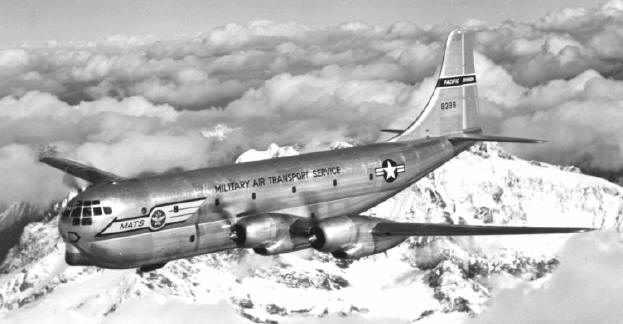|
|
| Boeing
C-97 Stratofreighter |
|
 |
The C-97 was the AAF cargo/transport version of the
B-29. Its
"double-bubble" fuselage, was basically a military
version of the Boeing Model 377 Stratocruiser; though its wing,
engine, and tail were acquired from the B-29. Between 1943 and 1950, 74 Stratofreighters were ordered; the
first flight occurred on Nov. 15 1944. A tanker version (KC-97)
was introduced in 1950 using the "flying boom"
refueling system and all subsequent USAF contracts for C-97s
were for tankers. The KC-97 Stratofreighter aerial tanker
version was an instrumental factor in providing SAC with genuine
intercontinental capability. Because of its slow cruising speed and low
cruising altitude, the KC-97 had difficulty being an efficient
refueler to high-speed jet aircraft. To refuel a faster, jet
aircraft, it performed a maneuver called
"tobogganing." The refueling connection would be made
high up and then the tanker and jet flew "downhill"
together enabling the tanker to pick up more speed.
When acting as a transport, the C-97 could
carry 68,500 pounds of cargo or up to 96 fully-equipped troops.
In the tanker role, the KC-97 was capable of off-loading 15,000
gallons of fuel. They were also used for medical evacuation and Search And Rescue (SAR).
890 aircraft were ordered, 74 C-97s
and 816 KC-97s. Beginning in 1956, the prop-engine KC-97s were gradually replaced
by the new KC-135 jet tankers, but some were modified for continued use
in other roles.
|
|
